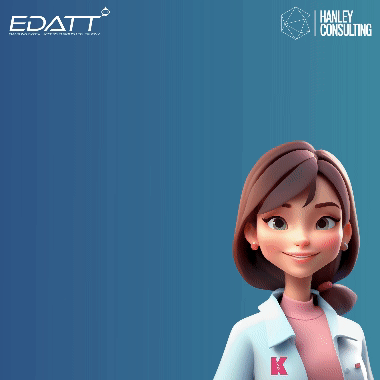Google, NHS Digital, the World Health Organisation…there are some big names in the news pot this week. There’s plenty to catch up on – as well as our HTN Now April 2021 sessions – so use our news bites below to find out the latest developments in the world of health tech.
Google to go back to personal health records?
A number of publications have focused on Google this week, reporting that the tech and search engine giant is considering reigniting its interest in patient health records. According to Stat News, an ‘early user feedback’ and patient recruitment programme has already been launched – as Google seeks to find out how users want to see and share their data.
The rumour is that this could lead to the creation of a new patient-facing medial records tool – something Google already once tried before without great success. Google Health was closed in 2012, just four years after it was launched. But now they’re seemingly back for another bite of the apple, which makes sense considering the recent explosion of health apps and wearables, and an increased focus on personal health throughout the COVID-19 pandemic.
NHS Digital selects Scandit for digital COVID testing
NHS Digital has chosen Scandit’s clinical quality computer vision technology for its project to digitise the COVID-testing process. The technology will be made available to any hospital or NHS organisation for free until November 2021 – to support COVID-related services, such as test tracking, PPE tracking and patient care.
Scandit, a technology platform for that offers AR and computer vision mobile solutions, has signed a national contract to provide data capture services for NHS Digital, as part of its pandemic response.
The tech is being used at all fixed and mobile test sites, in home-testing kits and at schools, to help with increased demand and surge testing.
Using a smartphone with Scandit’s integrated barcode scanning and computer vision technology, test site staff can scan a barcode on a booking form to identify patients while maintaining social distancing. Each sample vial also has a barcode attached to it, so staff can make sure a test sample matches the booking ID.
Samuel Mueller, CEO at Scandit, said: “We have been helping NHS Digital digitise their nationwide testing process since the start of the pandemic. We’re delighted our technology will continue to support the healthcare service as demand for testing services continues to increase.”
“Our technology ensures that tests can be tracked quickly and easily. It also integrates easily with smartphones, meaning that the NHS has been able to scale the number of testing sites and make it easy to deploy home-testing effectively. There is no acceptable margin of error. Our clinical-quality barcode scanning technology delivers a highly accurate read rate whether the scan is happening through a car window at a drive-in mobile test site or by someone who is self-testing at home.”
WHO launches Progress Indicators to measure access to assistive technology
The World Health Organisation (WHO) has developed ‘WHA71.8 Progress Indicators’. These will be used to collect high-level information from WHO Member States to track and measure their progress on the resolution to improve access to assistive technology.
It’s estimated that 1 billion people globally need assistive technology but that only one in 10 have access. One of the biggest barriers to access is considered to be a lack of data, which can mean decision makers face huge challenges in developing evidence-informed policies and programmes for their populations.
The resolution on improving access to assistive technology (resolution WHA71.8) urges all Member States to take actions to improve access to assistive technology, and requests that the WHO develops a Global Report on Assistive Technology.
In response, the WHO has created the Progress Indicators, which will monitor the status of assistive technology access across 10 ‘specific areas’ in the resolution: legislation, population and geographic coverage, budget, responsible ministries, human resources, education and training, financial coverage, regulations and standards, and specific assistive technology initiatives.
Data will be collected between April and June 2021, and will be reported in the Global Report on Assistive Technology, which will be presented at the World Health Assembly in 2022.
Leeds Uni works on weather forecasts that predict meningitis outbreaks
The University of Leeds is working on a unique approach to predict meningitis outbreaks – by using weather data.
Weather forecasts are being utilised to predict both the location and scale of outbreaks in sub-Saharan Africa, to create an ‘early-warning system’ that could provide more time for emergency response plans.
The technique – pioneered by the African Centre of Meteorological Applications for Development, and the African SWIFT initiative, which is led by the University of Leeds and the National Centre for Atmospheric Science, is using the data to give up to weeks’ warning of weather conditions that may make outbreaks more or less likely to occur. According to Leeds, the pilot system can also warn whether an outbreak could turn into an epidemic.
Professor Doug Parker, Lead Scientist at African SWIFT, said: “Researchers have known about the link between weather conditions and meningitis for decades. But with advances in weather modelling, we can now forecast with a high degree of accuracy one or two weeks ahead whether those conditions will develop, and that is giving health agencies a window in which to try and target their resources to the right place.
“We are in the middle of the African meningitis ‘season’ and so can assess how effective the specialised weather forecasts are in helping to better coordinate health action on the ground.”
The pilot project is being financed as part of the UK Government’s Global Challenges Research Fund.




